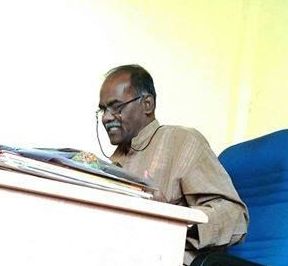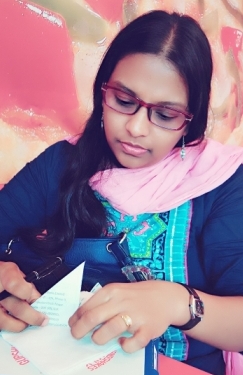Shefali
 Coming across barbaric ways of celebrating Holi by flinging semen filled water balloons over women in the national capital in the name of infamous phrase, ‘bura na mano holi hai’ (don’t mind, it’s Holi), I felt, for the first time, a genuine aversion against the euphoria of Holi celebrations across the subcontinent. Keeping aside my pre-notions of Holi, as the celebration of the arrival of spring and the festival of colours, I decided to re-consider the mythologies behind the festival. Although mythologies are merely fictional stories as they are culturally associated, they lay their imprints over every element of social institutions for centuries ahead.
Coming across barbaric ways of celebrating Holi by flinging semen filled water balloons over women in the national capital in the name of infamous phrase, ‘bura na mano holi hai’ (don’t mind, it’s Holi), I felt, for the first time, a genuine aversion against the euphoria of Holi celebrations across the subcontinent. Keeping aside my pre-notions of Holi, as the celebration of the arrival of spring and the festival of colours, I decided to re-consider the mythologies behind the festival. Although mythologies are merely fictional stories as they are culturally associated, they lay their imprints over every element of social institutions for centuries ahead.
We come across several barbaric incidents through social media which do not find required space in mainstream news channels because of three basic reasons. First, their indifferent attitude towards specific social groups; second, they’ve become more of a political tool to instigate common people, and third, ‘corporate media’ is the apt synonym for them. This article is an attempt to relate the atrocities against women and Dalits to the dominance of dogmatic mythologies in Indian society, on the basis of personal observation.
‘Victory of Good over the Evil’, is the universal answer for every critical statement questioning the insanity of any mythological incident that we have come across. But this certificate of ‘good’ and ‘evil’ is also decided by the historical culture of present hegemonic social groups, whose common conscience has always been driven by the uncontested authority of shastras, chaturvarnaya and ‘so called’ sanskritization in modern forms.
Holi, which is celebrated widely in India (the South and parts of North-East India are the exceptions), the mythological recognitions of the festival comes in layers.
The most popular story (Vaishnavite layer) recounts the burning of the so-called demon, Holika. A well known ‘evil’ king, Hiranyakashipu had a son, Prahlad, who was a great devotee of Vishnu (Hindu God). The king couldn’t tolerate this devotion and asked his sister Holika to sit in the fire with Prahlad as she had a divine gift of withstanding fire. However, when Prahlad was made to sit on her lap, he began to utter Vishnu’s name. According to the scriptures, Vishnu’s grace burned the demon Holika while her divine gift saved Prahlad. This instance is taken as a sign of victory of good over evil.
The Shaivite layer signifies the rebirth of Kamadeva (God of love in Hinduism), who was burnt in a bonfire as he tried to arouse Shiva’s senses. Rati, the wife of Kama, undergoes severe penance and pleads with Parvati to intercede with Shiva to revive her husband. Hence, in this case, Holi marks the transformation of lust (kama) into love. The “playful” prank played by Krishna (a form of Vishnu) on gopi (women in charge of a herd of cows) is also another reason behind the celebration of Holi in the region of Mathura.
Here, it will be worthwhile to note that there is a wide cultural and regional gulf between different parts of India which becomes invisible in the shadow of generalizations and ignorance. These generalizations are driven by inbuilt religious notions of superiority, domination, and exclusion. Authorities of Hindu religion i.e., Vedas and Puranas have historically portrayed Dalit Bahujan and Adivasi women as demons and the inhumane violence by the upper castes over them is always justified in the name of religious sanction. This symbolises the historical grievous condition of social groups which are hierarchically placed at the bottom of the Hindu fold. And doubtless, it is quite apparent in the current social context.
Every religion, when it reaches the level of extremism, indulges in violence and hatred. In Hindu society, the bond of caste is its extremism. It lacks an organic filament (a thread uniting disintegrated elements) which results in an exclusionary attitude, barbaric violence and often, zero resistance. Recent atrocities against women, Dalit Bahujan and other minorities exemplify the above statement.
Coming back to the ironic statement ‘victory of good over the evil’ amid festivals, recent violence against a specific community forces us to rethink who is the actual evil!
“Cycling to a vegetable market this spring, Moni was chased by monsters anonymous.
‘She was a woman. A Dalit woman”, said her Amma
‘…. up in petrol flames she could run for only 100 meters’ the Police reported.
(The incident took place in Unnao, Uttar Pradesh on 23rd Feb 2018).
Two years back in Bareilly, Dalits were thrashed and abused on Holi for asking upper caste men to play drums outside their homes (Times of India report). In the Koderma district of Jharkhand, widow of a Dalit man alleges that her husband was beaten to death by police personnel after he threw coloured powder on an upper caste man during the Holi celebrations (Hindustan Times report, 2017). This year, in Rajasthan’s Alwar district, a Dalit teenager was beaten to death while playing Holi with persons from other community when clashes broke out between the two sides (Indian Express Report).
These are just a small sample of “reported” cases of violence against Dalits. Moreover, it’s astonishing that we might never encounter news of such inhumane behaviour towards a community because on such “auspicious days” our mainstream media is always too busy in spreading positive vibes with flashbacks of ministers wishing “Happy Holi”.
Discussing such atrocities raises serious questions about religion. Dr. Ambedkar defined religion not as a means to spiritual salvation of individual souls, but as a ‘social doctrine’ for establishing righteous relations between man and man. Keeping the ‘social doctrine’ in mind, atheist feminists opposed religion as the main source of female oppression and inequality and believe that the majority of the religions are sexist and oppressive to women. For that matter, mythologies in Hinduism are replete with a long history of harassment against women. If analysed rationally and defined in contemporary feminist perspective terms, one could easily trace an explicit example of a ‘patriarchal-misogynist society’ where women have always been objectified and harassed in worst possible manner.
“only one wink in the rare-view mirror was enough to fade the gulal on her blushing cheek”
A woman while recollecting her past experience says, “Men holding down reluctant women and smearing colours on them, chasing them down streets and throwing water missiles at them would invoke public outrage and penalty but this one day is Disneyland for sexual predators and pedophiles”.
In the week preceding the festival of Holi this year, news of various offensive fluids in balloons being flung at women in a Delhi University college evoked outrage and protest, and raised serious questions on the insanity of such a festival. Many women also came up with videos expressing their past Holi experience which still terrifies them. Moreover, locking up women in hostels and PGs on this day calling it ‘moral policing’ proves nothing but the ironic morality of this festival. Cases of hooliganism on this day are not new but the attitude of the social order is as ancient as the mythologies associated with the festival. Already worsening situations reaches its pinnacle when voices of ministers pop up. VHP leader, Surendra Jain, writes, “Worse instances of sexual harassment occur daily on the Delhi Metro. Why not talk about that?”
Such a statement itself drags sexual harassment against women into the process of normalization. Personal experiences are evidence enough for the harassment that Indian women face in public spaces. It’s not only about Delhi Metro or Mumbai railway station; women are terrified even in their own homes.
It’s another matter of irony that the so-called progressive liberals still see such days as an occasion for celebrating the onset of spring and playing with colourful festivals while speaking against prevalent hooliganism in the form of sexual harassments and Dalit atrocities. They need to understand that if the mythological reason, itself, is to celebrate the burning alive of a woman (Holika), Krishna playing pranks on gopis and Rati, sacrificing herself to revive her husband, such festivals, in the name of spring and colour, will be always celebrated as a day in Disneyland for sexual predators and castiest monsters.
The euphoria of such festivals, legitimizing the mythologies, invisibly incubates (in a psychological manner) harsh differences along caste-varna lines among different social groups. As a result, despite having cultural differences, the in-built historical nature of ethnocentrism at the micro-level eventually becomes apparent at the macro-level of society. Moreover, the level of collective resistance and agitation against the constituting hatred in the current scenario signifies the degree of acceptance of the authorities (Shastras and Puranas) of the Hindu fold.
To stop violence against women, law, police and the whole social order needs to be very strict and active. Normalization of eve-teasing, abuses, and sexual harassment should be stopped at the earliest. Moreover, victim blaming is another disheartening trend prevalent in our society that needs to be instantly impeded. But these and others could be just some physical actions that authorities can undertake to ensure the safety of women on dark roads in the night, fast Delhi metro or for that matter, in homes itself. The actual monster resides in the conscious of those bodies which are conditioned in a society which has historically always provided a secure zone for molesting, grabbing, abusing and finally, killing a woman, irrespective of caste.
This secured zone, undoubtedly, is religious, cultural and political. There might be another Dalit woman like Moni, who is scared of being blazed alive, revising the mythological history of Holika. As Dr. Ambedkar pointed out, ‘caste is the monster that crosses your path. You cannot have any reform unless you kill this monster’. The might of this monster increases every time we celebrate the existence of authorities of the Hindu fold in the form of such festivals. There is no other way than attacking the crux of these cultural norms which sanctions barbaric and inhumane attitudes. For this, we need to, as told by Babasaheb, EDUCATE, AGITATE and ORGANIZE.
All those pseudo-liberals out there should sacrifice the enjoyment that they get in these savarna, patriarchal and misogynist festivals and should take into account the true meaning of liberalism, social movements and finally the Revolution. For a better collective, they need to be more inclusive and less offensive. If somebody born in the upper caste gets offended by hearing the critique of the historical hegemonic culture they have been following, it lies in their bag of responsibility to understand that the same culture has resulted in the killing of basic consciousness of humanity from past many centuries. But that understanding will come with actual awareness and correct comprehension of mythologies and the whole religion, at large.
For me, “Victory of good over the evil”, this conclusion of every mythology will again scare the dead souls of stars up in the cosmos. The great cosmologist Stephen Hawking said, ‘the greatest enemy of knowledge is not ignorance, it is the illusion of knowledge’. And the religious knowledge, upon which society is extremely dependent, has already mutilated humanity.
Now, the judgement on the conclusion of every mythological reason behind the celebration of the festival lies upon the reader because judgments are also sociologically cultural and vary accordingly!
~~~
Shefali is a first-year student of B.A (H) Sociology at Miranda House, University of Delhi.










